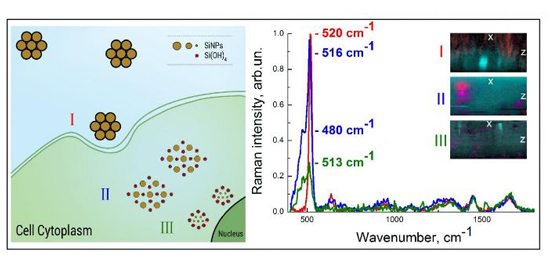Release date: 2016-07-28 As the new darling of the American Environmental Molecular Science Laboratory, silicon nanoparticles have been developed as a growable battery. It is only necessary to fill the carbon shell of the conventional battery with single silicon nanoparticles that can store electrical energy. When the battery is charged, the single silicon nanoparticles will automatically expand, and the storage capacity is 10 times that of the ordinary battery. In the past, the relationship between cancer and nanometers was usually gold nanoparticles. However, the recent Moscow State University of Lomonosov and photonics technology and the Leibniz study in Germany publicized their latest findings and proved that silicon nanoparticles Granules can also be used to diagnose and treat cancer. The researchers said that the experiment proved for the first time that silicon nanoparticles have penetrated into the diseased cells and completely dissolved after delivery of the therapeutic drug. This study is an experiment in "therapeutic diagnostics", a combination of diagnostic tools and therapeutic tools. Although metal nanoparticles can rapidly target drugs, they can also cause certain side effects, such as damage to kidney and liver function. “Because gold, silver, titanium dioxide, cadmium selenide and many other metal particles are almost impossible to excrete,†explains Liubov Osminkina, a senior researcher at Lomonosov University in Moscow, “when the nanoparticles reach the blood, if they are inside the internal organs. Staying for a certain period of time, based on its own toxicity, will cause long-term damage to the body." When looking for nanoparticles that are more compatible with the human body, the researchers found that silicon is a very good material. Silicic acid dissolved in silicon is beneficial to the health of bones and connective tissue. To prove that silicon nanoparticles can dissolve smoothly in the body, Osminkina uses two types of nanoparticles, one that emits light and one that does not. The team used Raman spectroscopy to illuminate the material with a single source and measure the interaction of light with the material to derive material changes. “This technology not only locates the nanoparticles, but also tracks the process of dissolution throughout the process.†When the nanoparticles dissolve, their spectrum becomes brighter and the frequency becomes lower. According to experiments, it takes only 5-9 hours for silicon nanoparticles to track breast cancer cells and penetrate into cells the next day. After the loaded drug was delivered to the cells, the particles completely dissolved after 13 days. Osminkina speculates that porous silicon nanoparticles may be a harmless treatment for cancer. Source: Lei Feng Net Eas Soft Label,Eas Am Label,Am Eas Tag,Rf Soft Label WENZHOU BOSHINE ELECTRONIC SECURITY CO.,LTD , https://www.boshine.com
